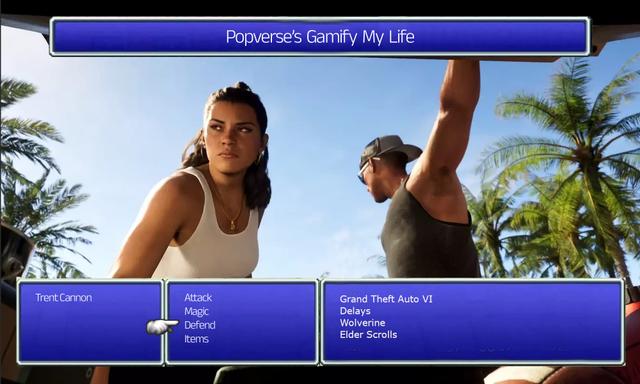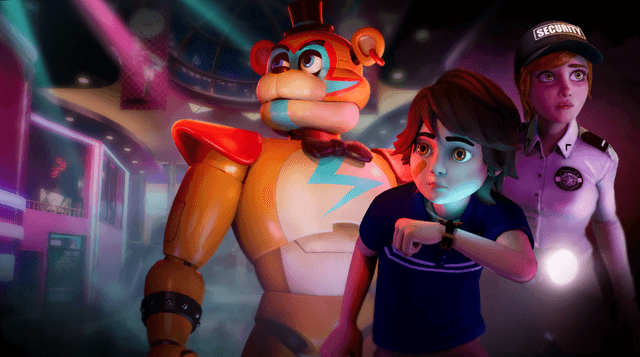If you click on a link and make a purchase we may receive a small commission. Read our editorial policy.
The bible of comic books based on the Bible
Looking for comic books that Are connected to the Bible? We've got you covered

For as long as there have been comics, there have been books of all different kinds. While many think of comics as superhero stories, there have also been horror books, war books, romances, detective stories, science fiction, fantasies, mysteries. Today that’s even more the case.
But one kind of comic that it can be hard to come by is religious comic books. For instance, you can certainly find retellings of ancient Jewish biblical stories or Catholic lives of the saints that are in comic book format. But generally these end up being something for children to use to learn bible stories.
When it comes to the Bible there are however, some really fine comic books out there, retelling stories both from the Hebrew Scriptures (which Christians refer to as the Old Testament) and the New Testament.
The Book of Genesis by Robert Crumb

In 2009, indy zine cartoonist Robert 'R.' Crumb, whose work is known among other things for its satirical and often highly sexual vision of the world, took on a project I’m not sure anyone could have predicted, a faithful retelling of the Book of Genesis. And by faithful I mean he depicts every line of the Bible’s first book, even the ones that don’t go anywhere, like the strange unexplained group of angels, the Nephilim, who effectively rape human women and create their own line of offspring. And all along the way there is no commentary on Crumb’s part. Rather than sending up or putting down God the Father and his often-erring humanity, Crumb seems absolutely intent on letting the book and its characters speak for themselves.
At first, Crumb’s insistence on portraying everything that is depicted in Genesis can make reading The Book of Genesis initially overwhelming. There’s a lot of panels on most pages, and a lot of words. But Crumb’s portrayal of God and humanity is frankly so beautiful that it wins you over. I was particularly taken with the facial expressions that Crumb gives characters like Adam and Eve or Noah as they encounter God; in their wonder, fear, etc. there’s a freshness that gave me a whole new appreciation for their oh-so-familiar stories. And his take on God is equally interesting and at times moving. When God rests on the seventh day of creation, we see him sleeping under a tree near Adam and Eve, and the intimacy of that moment speaks volumes about who God is and how he sees humanity. I will be thinking about that moment and others in this book for a long time to come.
Buy: Amazon
Let There Be Light: The Real Story of Her Creation by Liara Finck

In some ways New Yorker cartoonist Liara Finck’s retelling of the Genesis story could not be more different than Crumb’s. Where his book is intent on being faithful to the literal words on the page, Finck’s begins with a quote from from Jamaica Kincaid: “When I encountered the first book, the Book of Genesis, I immediately understood it to be a book for children.” And Finck’s attitude reflects on the surface a chidren’s book-like playfulness. God is portrayed as a woman who can’t quite figure out her creation — after she creates darkness on the first day, Finck writes, “She lay there unable to move, wondering if this was all she was capable of.” She makes man name the animals because she just can’t figure out what to call anything. Also, rather than just creating man she also creates a furtive creature who refuses to be defined by him and names herself Lilith, Monster of the Night.
But Finck’s approach, too, generates some really touching insights. In being named each creature takes on a greater solidity and specificity: the bats gets leathery; the tiger fast. Cain’s murder of Abel is understood in the broader context of how hard Cain has worked to try and please God — you try growing food in a desert! — and how little she cares. And after he does the deed, before God knows, he grieves, horrified at what he’s done. As the book goes on God becomes a more disconnected and often menacing figure, which matches up with the original text. But for Finck the greater quest of the work is to try and understand what might have brought God to this point, and to watch her slowly realize the cost of her choices upon humanity. Ultimately Let There Be Light is a redemption story, but in the end it is God who is redeemed.
Buy: Amazon
A Contract with God by Will Eisner

Will Eisner’s story of a Hasidic Jewish man in a Bronx tenement who rages at God after his daughter dies is a profound retelling of the story of Job. When he was a boy, Frimme Hersh made a contract with God that he would be faithful to everything God has asked of him. So when a child was abandoned on his doorstep as a man, he adopted her as his own and made her “the joy of his years.” Then she developed an illness and died, leaving Hersh to wonder what was the point, and why does he care what God wants anyway? The tale that unfolds is unexpected and also in many ways shattering.
A Contract with God is the arguably first graphic novel ever written, one that revolutionized the way that people thought about comic stories. Many of Eisner’s subsequent graphic novels, like A Life Force or Minor Miracles, also touch in some way on issues of faith. And the characters in the tenements that he so frequently writes about always have a sort of biblical parable quality—their beliefs are tested, and they discover beauty in unexpected places. But Contract, which Eisner wrote as an attempt to exorcise the rage he felt over the death of his own daughter from leukemia eight years earlier, is a uniquely powerful story.
Buy: Amazon
Jesusfreak by Joe Casey and Benjamin Marra

How did Jesus actually go from poor carpenter in Nazareth to Messiah? How did he even figure out who he was and what was him mission? What is the truth of his story? These are questions that Christians and historians have debated for thousands of years. In Jesusfreak, Joe Casey and Benjamin Marra present their own interpretation, based on their own research into the world in which Jesus lived. And the story that they produce is striking for its emphasis on the politics of the world in which Jesus lived, the oppressive regime of the Roman Empire, which left so many Jews destitute. Pontius Pilate here is a monstrous figure, invested in the entrenchment of his power and willing to murder hundreds or thousands of Jews to accomplish that goal.
Within this world Jesus emerges first not as a messiah but as a fragile man, tormented by violent dreams of snakes and angels at war in heaven and desperately uncertain about what he’s supposed to be doing with his life. Over the course of the book he eventually finds that clarity; and what makes the book true to its name is the way it draws on ideas and imagery from all of things the world of kung fu to paint a picture of Jesus’ emerging cosmic consciousness. In the book’s climax Jesus tries to rescue John the Baptist from prison and encounters the book’s Satan figure, an enormous crocodile man who seems able to stare into Jesus’ soul. A massive kung fu battle ensues, complete with Jesus doing backflips, full body kicks and Matrix bullet time bends. It’s just a wildly unexpected take on Jesus, and a lot of fun on the page.
Unlike other books, Jesusfreak has no interest in retelling the whole of Jesus’ story or of any Gospel. There’s just one healing in the book and no other mystical acts. And while the book puts Jesus on the path to his death in Jerusalem, there is no passion story here. It’s a move that keeps the book really focused on Jesus and his quest to know who he is. Crafted in a style that is highly reminiscent of pulp books from the 50s, including at times some pretty dense dialogue, Jesusfreak may not be for everybody. But it’s definitely an interesting and creative take on the Jesus story, one that makes you appreciate in a new way the struggle Jesus must have gone through on the way to figuring out who he was.
Buy: Amazon
Second Coming by Mark Russell and Richard Pace

When Mark Russell and Richard Pace’s comedic story of a Jesus and a Superman-type figure living together in a two-room apartment was first announced it so infuriated some religious people that the book got delayed and ended up having to find a new publisher. But in fact the book is remarkably heartfelt in its portrayal of Jesus; he is the Son whose care for humanity that God the Father just cannot understand. “33 years?!” God shouts at Jesus when he returns after the Ascension. “You only lasted down there for 33 years?! I was down there for millennia!” It’s God’s disgust with his son that keeps Jesus from returning as he promised; and he returns to Earth only after God sees in action the hero Sunstar, a flying human from another planet who is idolized by humanity. God asks Sunstar to take Jesus under his wing and teach him how to be a real hero.
Of course, once Jesus gets to Earth it’s Sunstar that ends up learning a thing or two about what it means to save people, and also about his and God the Father’s very different experiences of humanity. For God the Father humanity is a constant disappointment, barely worth paying attention to any more. “You abandon thse people and thousands perish. You help them and thousands of people perish,” he tells Sunstar as we see the Jews using the Ark of the Covenant to wage war. “They’re made out of mud! What do you expect?” For Jesus on the other hand, his touchstone is his relationship with childhood friend Shimon. Jesus gives Shimon his father’s carpentry shop after he begins his ministry, but Shimon is soon forced by the Romans to forge crosses, which absolutely alienates him from his fellow Jews. On the road to his own crucifixion, bloody and exhausted, Jesus comes across Shimon again. And he tells Sunstar, “You think the most important thing I did that day was being nailed to some wood?! It wasn’t,” as he hugs Shimon, comforting him.
In the forward to the first of two Second Coming collections, Russell recalls the controversy that surrounded the book’s initial release. “I was thinking that I had as much right to an opinion on the meaning of Christ’s teachings and their legacy as anyone else. That was enough to get me labeled a blasphemer.” But in the hands of Russell and co-creator artist Richard Case Second Coming is actually one of the most thoughtful presentations of Jesus that I’ve seen in any form. Honestly, I wish every Christian religious leader would read it and compare what they view as important versus with what Jesus did. We might have kinder and more loving churches.
Buy: Amazon
The Harrowing of Hell by Evan Dahm

Jesus died on Friday and didn’t rise until Sunday. So where was he during those days in between? In The Harrowing of Hell, Evan Dahm imagines Jesus descending into the depths of Hell with the intention of freeing everyone that is trapped there. But the deeper he goes, the more he encounters resistance not only from the beings that run this place, many of whom transform into Venus Fly Trap-faced monsters and chase Jesus deeper into Hell. Adam and Eve refuse to leave their cell entirely, throwing an apple at him when he opens the door to their cell.
In fact rather than the harrowing of Hell, Dahm sees Jesus’ descent as represents his own harrowing, the final temptation to despair. His power is revealed to be inadequate to the task of salvation. Meanwhile the cat-eyed Adversary reveals that his entire mission is going to be used by future generations to justify war and persecution. And in Dahm’s hands Jesus is drawn in an almost child-like way. He’s smaller than most everyone he meets and his main facial characteristic are his lined, wide and emotive eyes. The color palette is equally stark, with Hell rendered entirely in scarlet reds and blacks, while Jesus himself is black and white. It’s a powerful and thought-provoking story about a loving God confronted with his own inadequacy, and our own human resistance to the call of God.
Buy: Amazon
The Mystery Play by Grant Morrison and Jon J. Muth

In a small town in northern England, an actor playing God in a retelling of the stories of the Bible is murdered. The prime suspect is the man playing the Devil (who may or may not be the actual Devil). And the detective on the case? Well, his last name is Carpenter. You be the judge.
Much like Jesusfreak, The Mystery Play is an exploration of what it would be like to be a human who is somehow also God in a world of suffering and sin. How do you 'fix' a broken world? And when you may or may not be the son of God, how do you keep some semblance of your own sanity? Beautifully, atmospherically painted by Jon J. Muth, the book draws readers into a space of mystery and heartbreak that opens up the Christian story in surprising ways.
Buy: Amazon
Preacher by Garth Ennis and Steve Dillon

Preacher is not your typical religious/bible comic. Its story concerns Jesse Custer, a small town broken-down Christian preacher who finds himself with the sudden power to compel people to do whatever he says, and decides this is a gift God has given him. In fact he’s become the hiding place for Genesis, the supernatural infant child of an angel and a demon, whose power is so great it might rival that of God. Learning that God vanished the moment Genesis was born, Jesse sets out across the United States with his former girlfriend Tulip, and an Irish vampire named Cassidy, to find God.
Preacher is a profoundly adult book, filled with violence, sexual situations and takes on figures like God and the Devil that younger readers or pious people might find difficult. But as irreverent as the book can be, Preacher fits on this list as another book trying to make sense of the stories and figures of the Jewish and Christian religious traditions, and to chart a personal course forward through their strange and often contradictory demands. In the face of the suffering and corruption we witness in our world and churches, Jesse’s insistence that God needs to be found and held accountable for having abandoned the world resonates so strongly.
Buy: Amazon
The best place to find your next comic book is at one of thousands of local comic shops. But how do you find them, and how do you navigate them? Let us help with our comic store guide.
Follow Popverse for upcoming event coverage and news
Find out how we conduct our review by reading our review policy
Let Popverse be your tour guide through the wilderness of pop culture
Sign in and let us help you find your new favorite thing.
















Comments
Want to join the discussion? Please activate your account first.
Visit Reedpop ID if you need to resend the confirmation email.